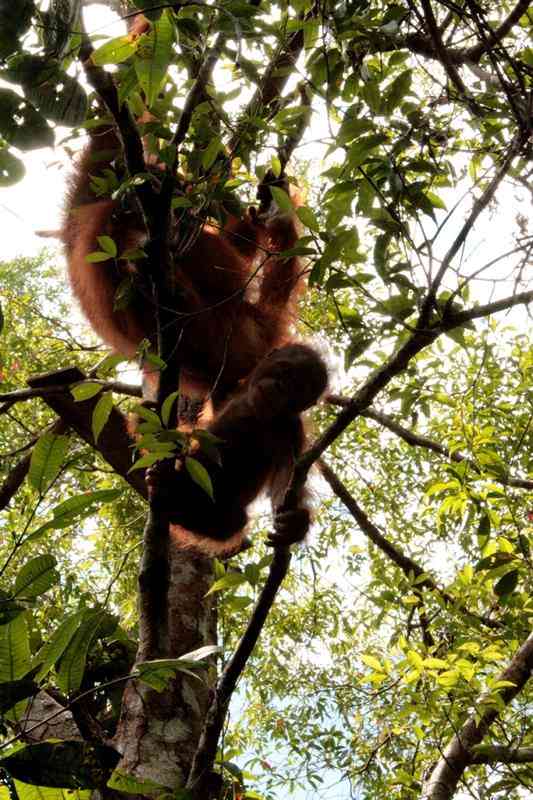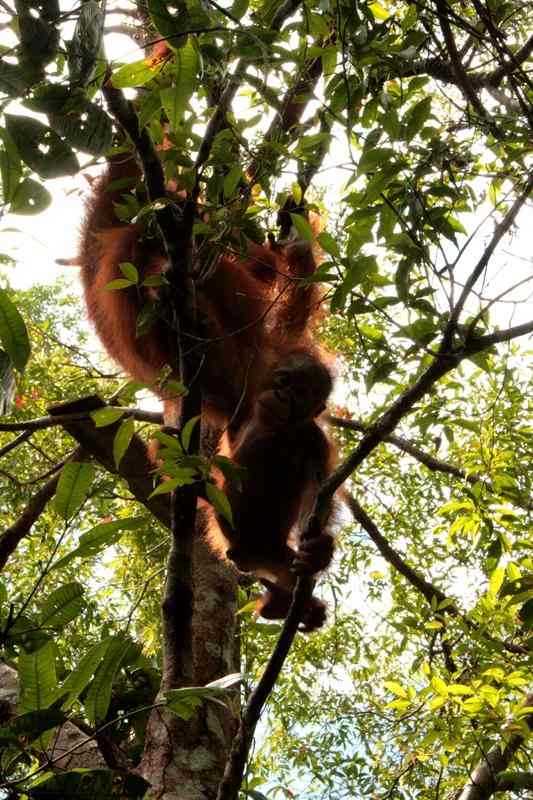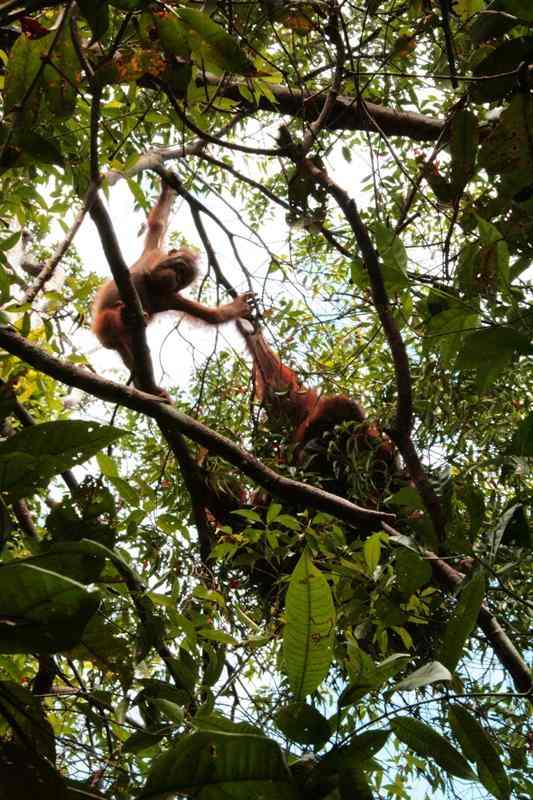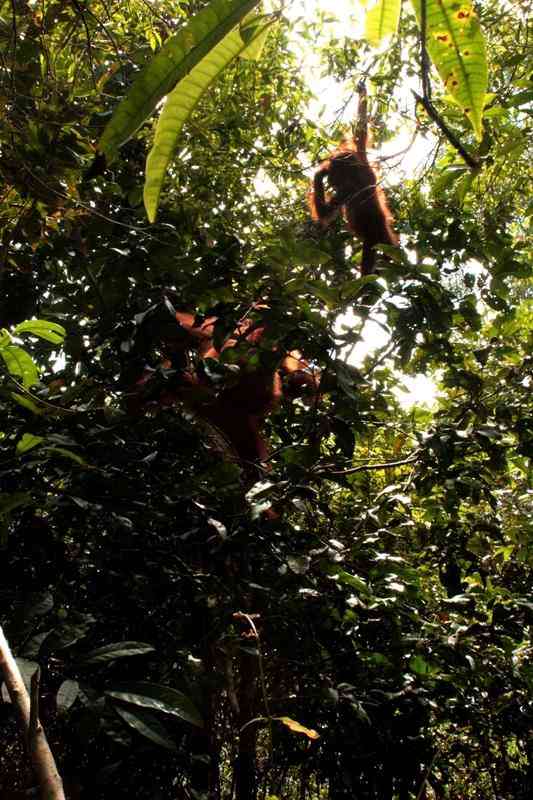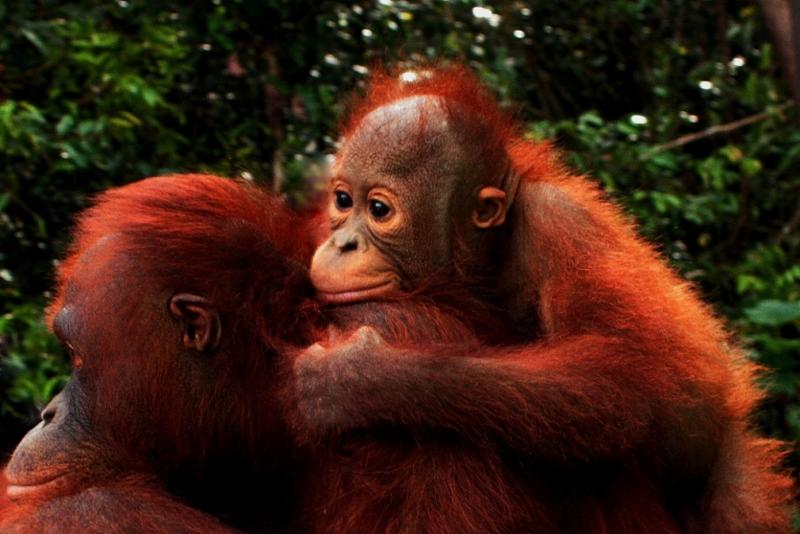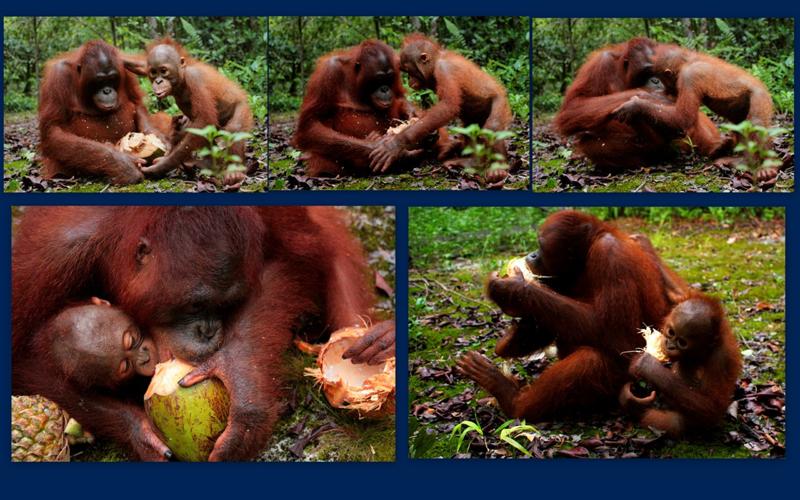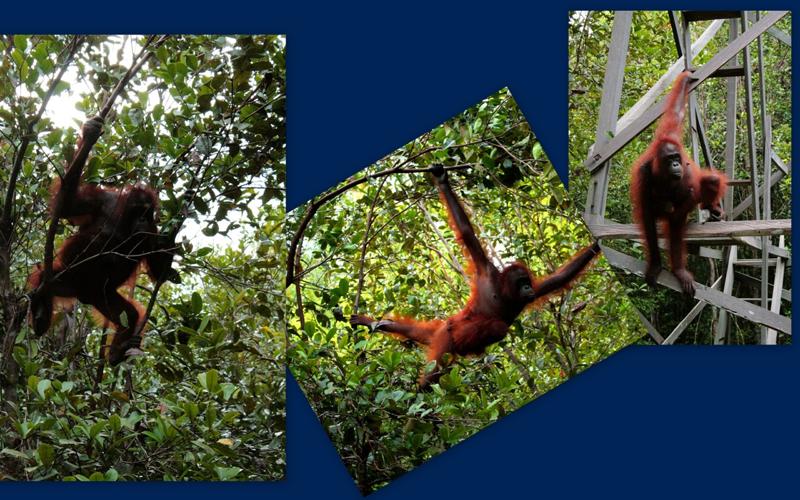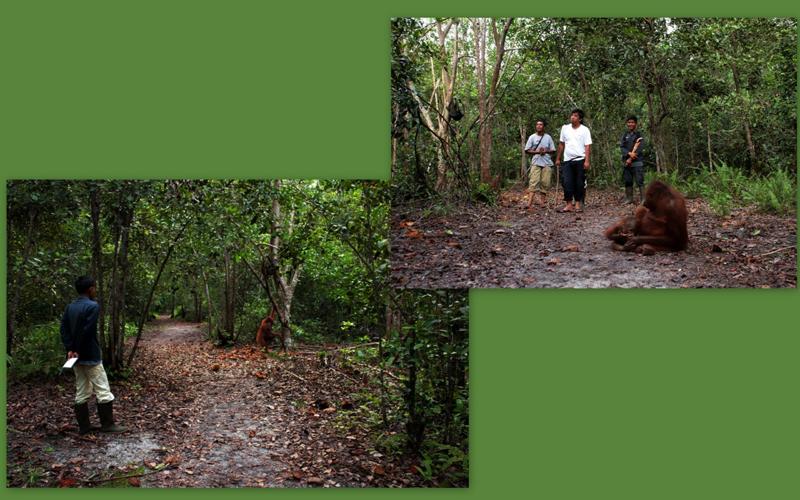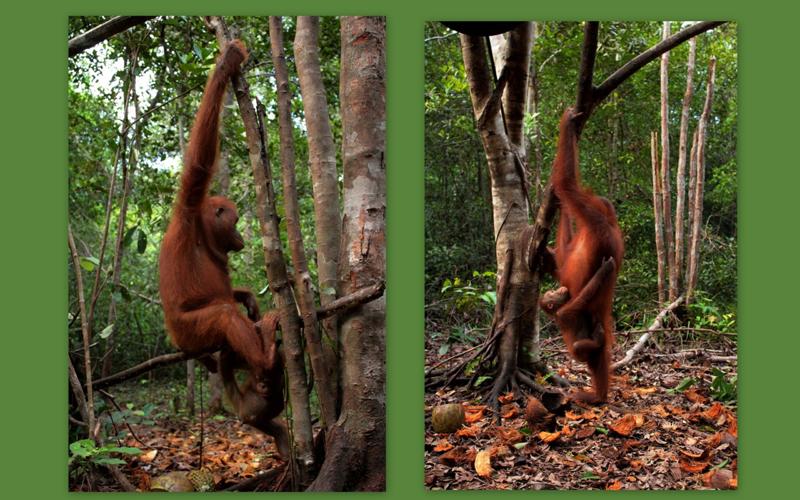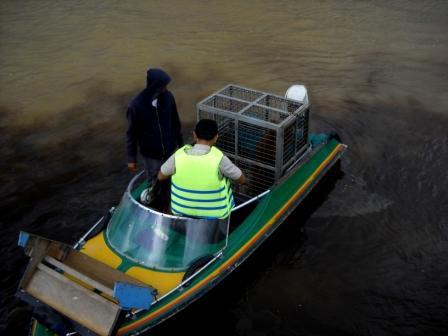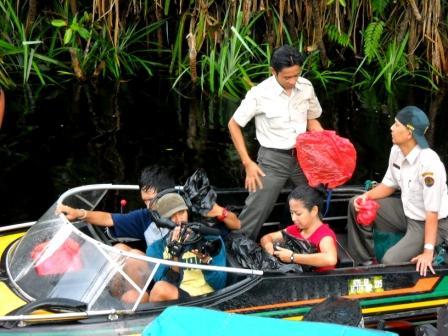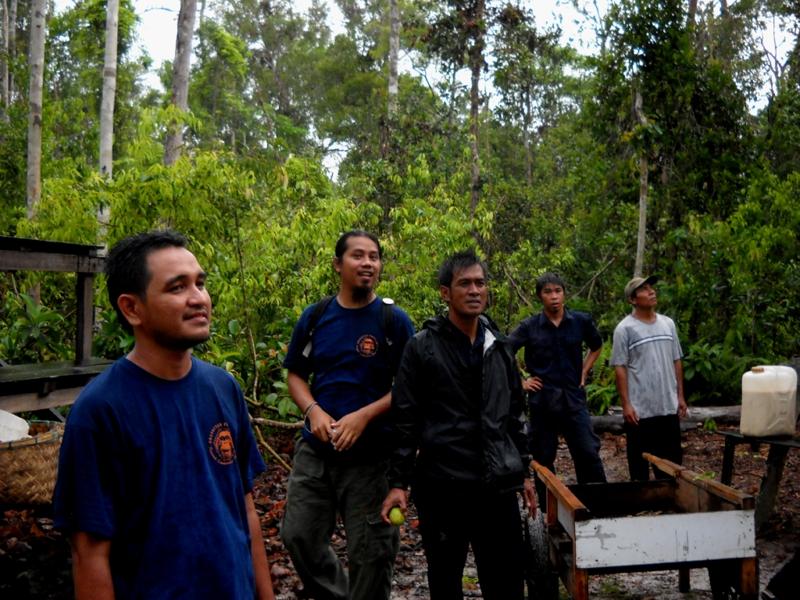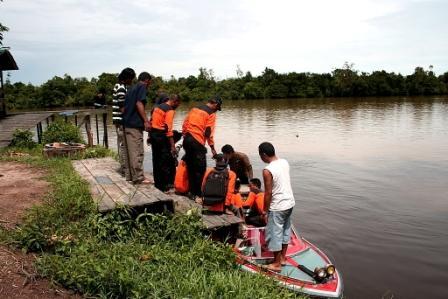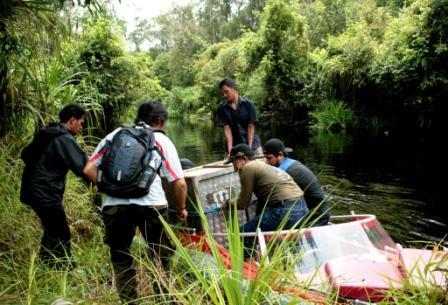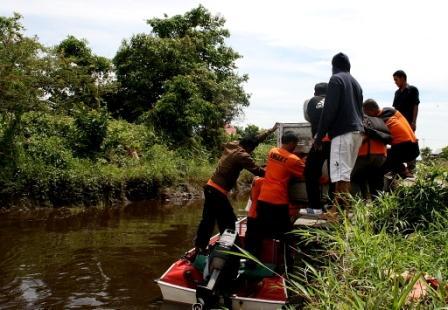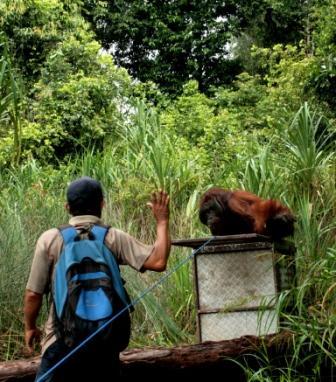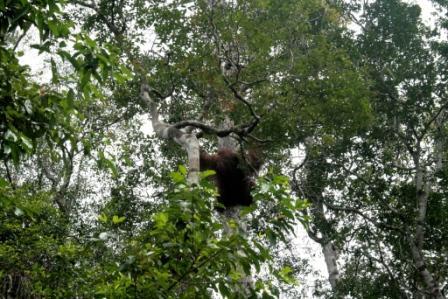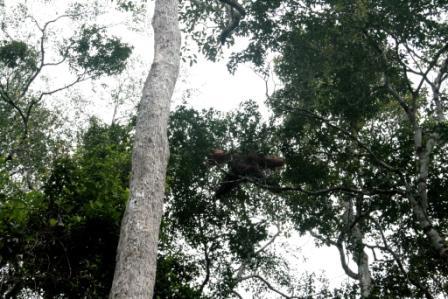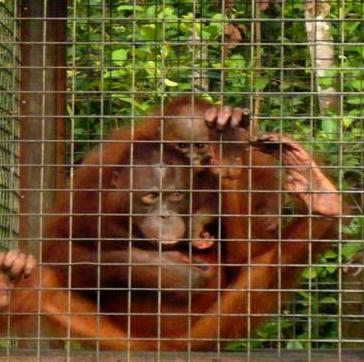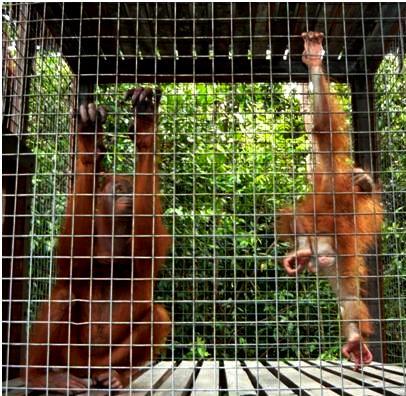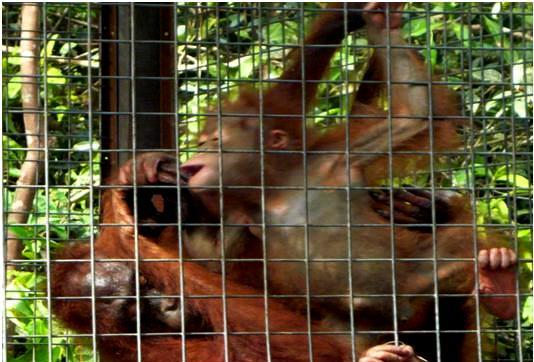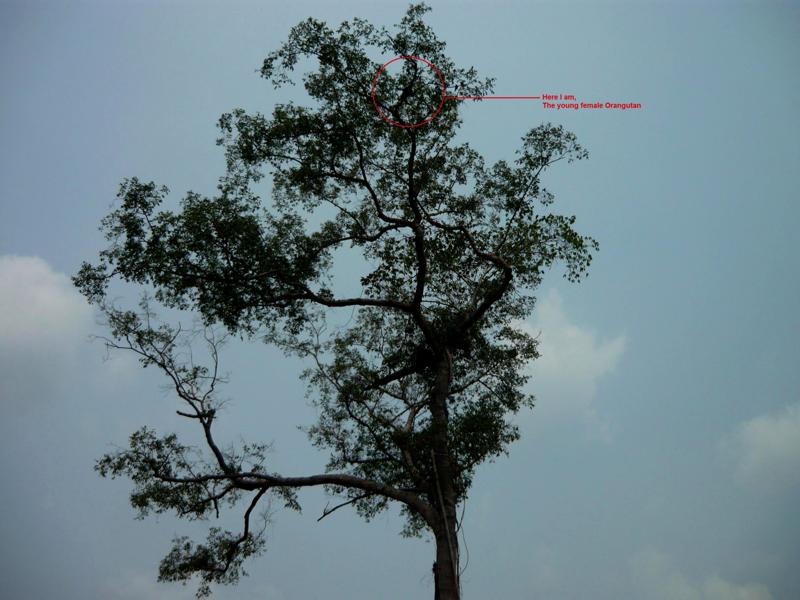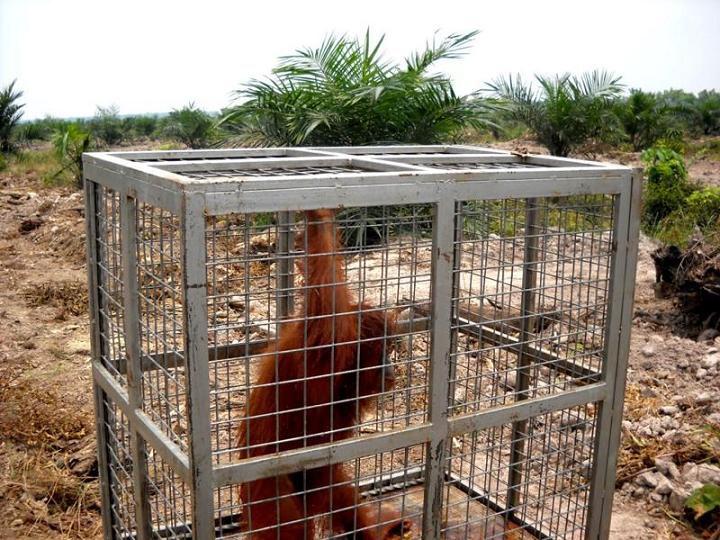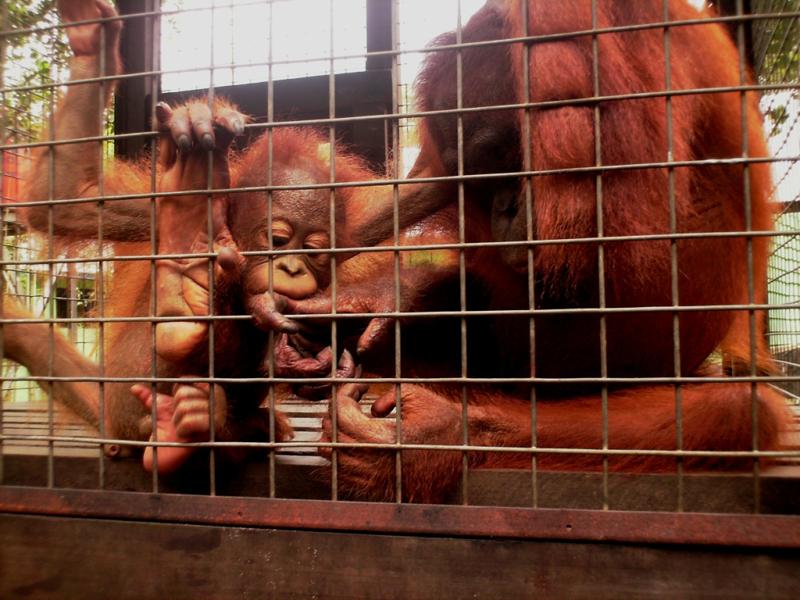We have received another report from our vet, Dr Fikri, about an orangutan that was rescued from an oil palm plantation. The Central Kalimantan Agency for Natural Resources (SKW II BKSDA) received a report from an oil palm company, PT.TASK III, located in Cempaga District, Sampit, about the presence of an orangutan. The ape had been seen in the plantation eating oil palm fruit. The Orangutan Foundations rescue team and BKSDA arrived at the oil palm plantation and with the plantation staff coordinated a rescue plan and headed straight to where the orangutan had been seen. Luckily she was still there. The orangutan was a female and had been living in the plantation for some time because of the number of nests in trees.

Photo 1. Oil palm plantations PT.TASK III which is adjacent to the plantation owned by the community

Photo 2. Remaining forest around PT.TASK III plantations

Photo 3. Remaining forest around PT.TASK III plantations

Photo 4. Remaining forest adjacent to the PT.TASK III plantations

Photo 5. Other land owned by oil palm plantations which have not been planted which is adjacent with PT.TASK III

Photo 6. Orangutan nests in the remaining forest around oil palm plantation
The team did an expert job in darting the orangutan. She was anesthetized quickly with minimal stress and no injuries incurred. Dr Fikri examined her and she was wild female orangutan, around 12 years old and weighing 42 pounds.

Photo 7. Orangutan in the middle of oil palm plantations, before anesthesia

Photo 8. Dr Fikri prepares the anaesthetic

Photo 9. Orangutan has been sedated

Photo 10. Examination of the condition of the orangutan

Photo 11. Examination of the orangutan

Photo 12. Examination of the orangutan

Photo 13. Examination is complete and orangutan is put a holding cage

Photo 14. Rescue at plantation completed

Photo 15. Orangutan leaves the plantation

Photo 16. Orangutan arrives at the BKSDA Office, Pangkalanbun
The orangutan was taken to BKSDA Office in Pangkalan Bun. On the 12th June it was decided she was ready to be released into the wild (see images below). Later that morning she was taken by car from the BKSDA office to where the speedboat was waiting. She then began her journey by river into the Lamandau River Wildlife Reserve. She was released on the Teringin Lama River between Camp Siswoyo and Camp Gemini, two orangutan release camps which are run by the Orangutan Foundation.
The orangutan moved slowly out from the cage and climbed up into the trees. Dr Fikri watched as she climbed away and settled high in another tree and looked around – she seemed to be thinking "Hurray ..... I have been freed....".
At the time of writing this post, the field team informed us of another orangutan found in the vicinity of same plantation. This female’s foot was chained and very swollen. On examination the orangutan was found to be three months pregnant. We’ll update you soon.
A male orangutan that we attempted to rescue in April, at the time of filming the Sir Terry Pratchett documentary, is still in the plantation in spite of a number of attempts to rescue him. The fully adult male moves further towards the river when approached and so the team will wait until they feel it is safe to dart him.
Ashley Leiman, Founder and Director of the Orangutan Foundation, is worried about this recent increase in rescues as it signifies what immense pressure this endangered great ape’s habitat is under.

Photo 17. Orangutan leaving BKSDA office

Photo 18. Orangutan moved to speedboat

Photo 19. Orangutan on a speedboat

Photo 20. Journey to the Wildlife Reserve

Photo 21. Preparation for release

Photo 22. Dr Fikri opens the cage door

Photo 23. Opening cage door

Photo 24. Orangutan is free again

Photo 25. Orangutan is wild once more!

Photo 26, Dr Fikri watches as orangutan moves away

Photo 27. orangutan in tree, somewhere.
Please donate to our latest appeal and support our guard posts and forest patrols: they keep the endangered orangutans and their forest homes safe. (Read letter by Ashley Leiman OBE)



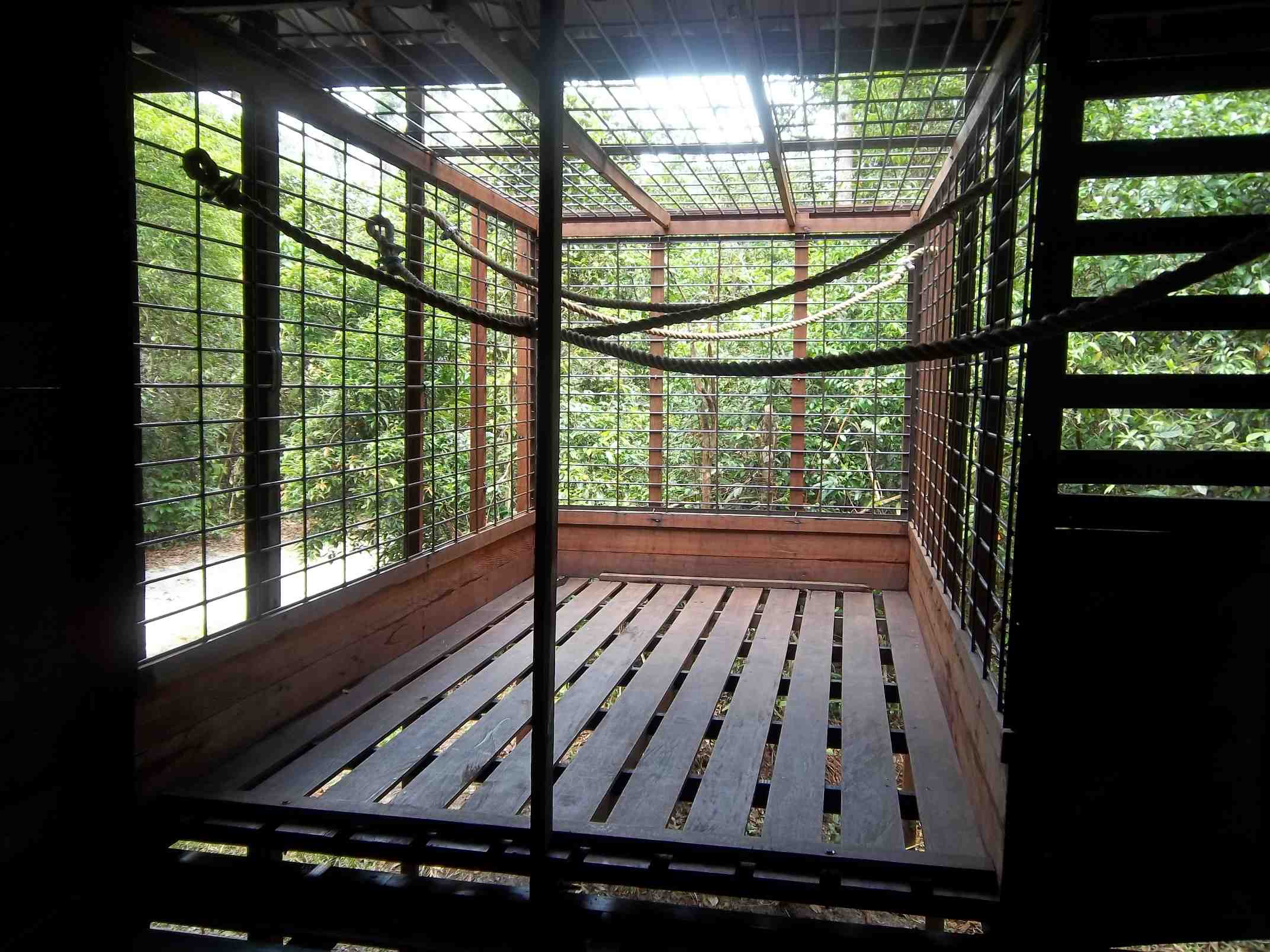


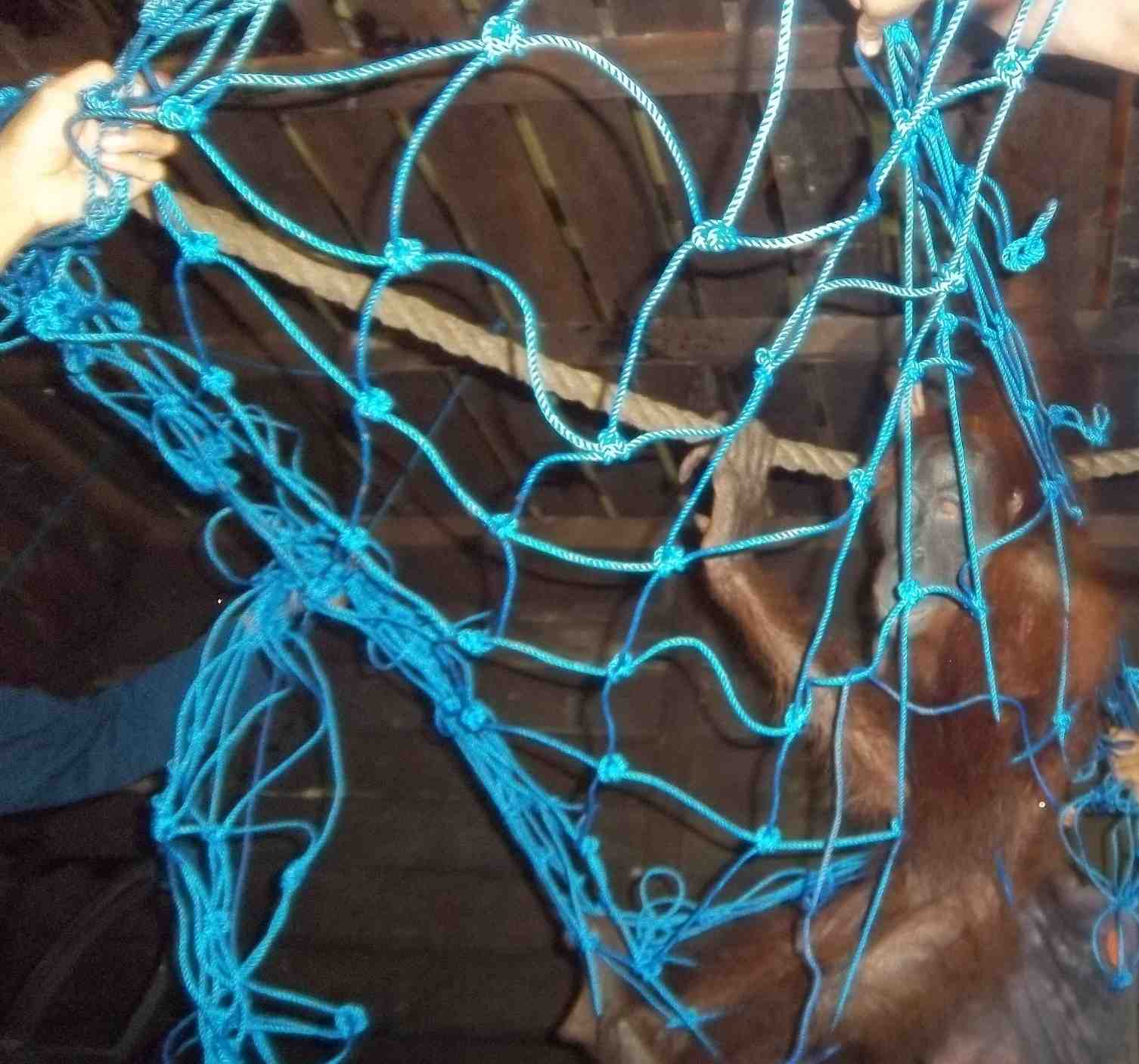



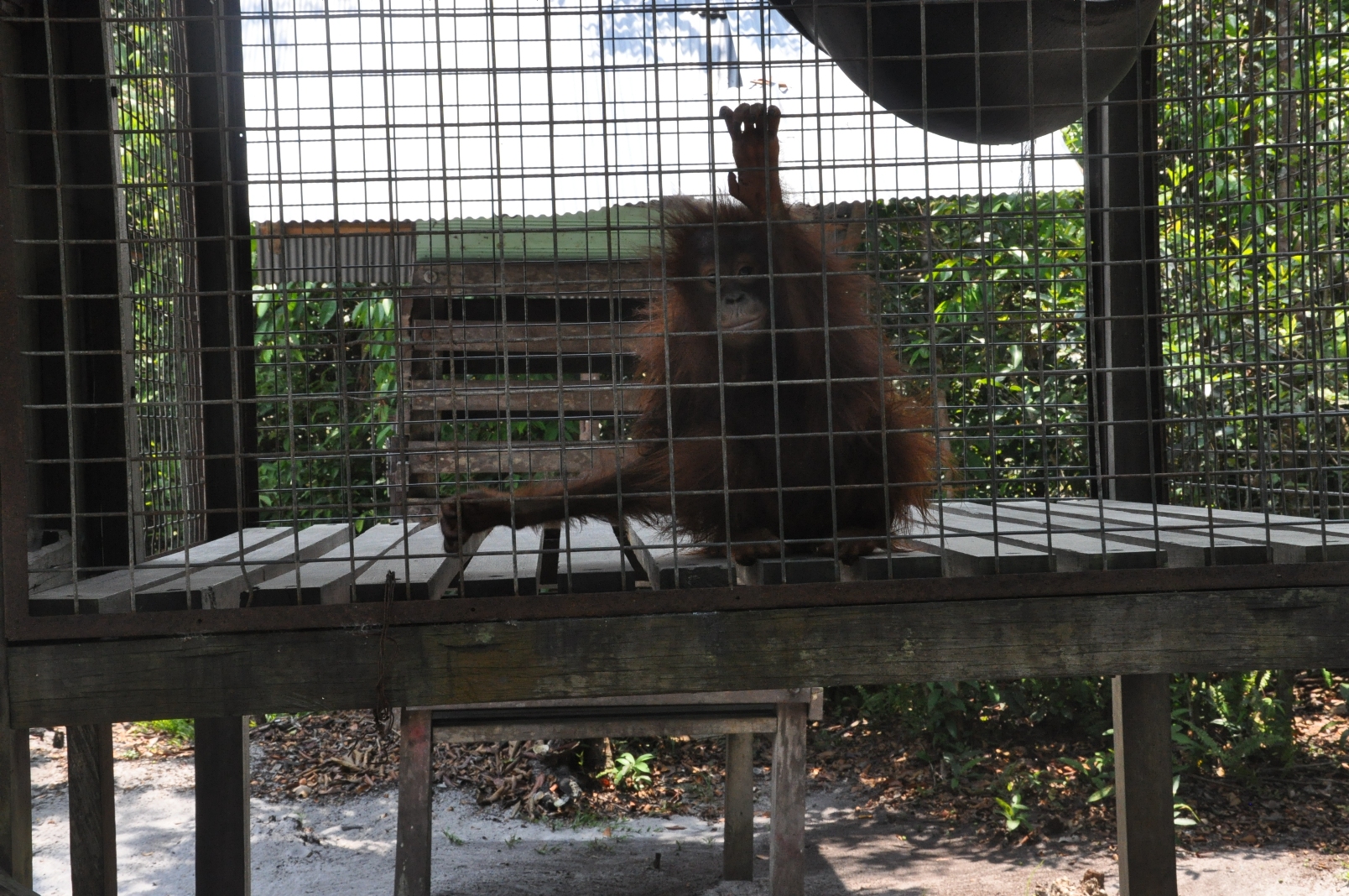


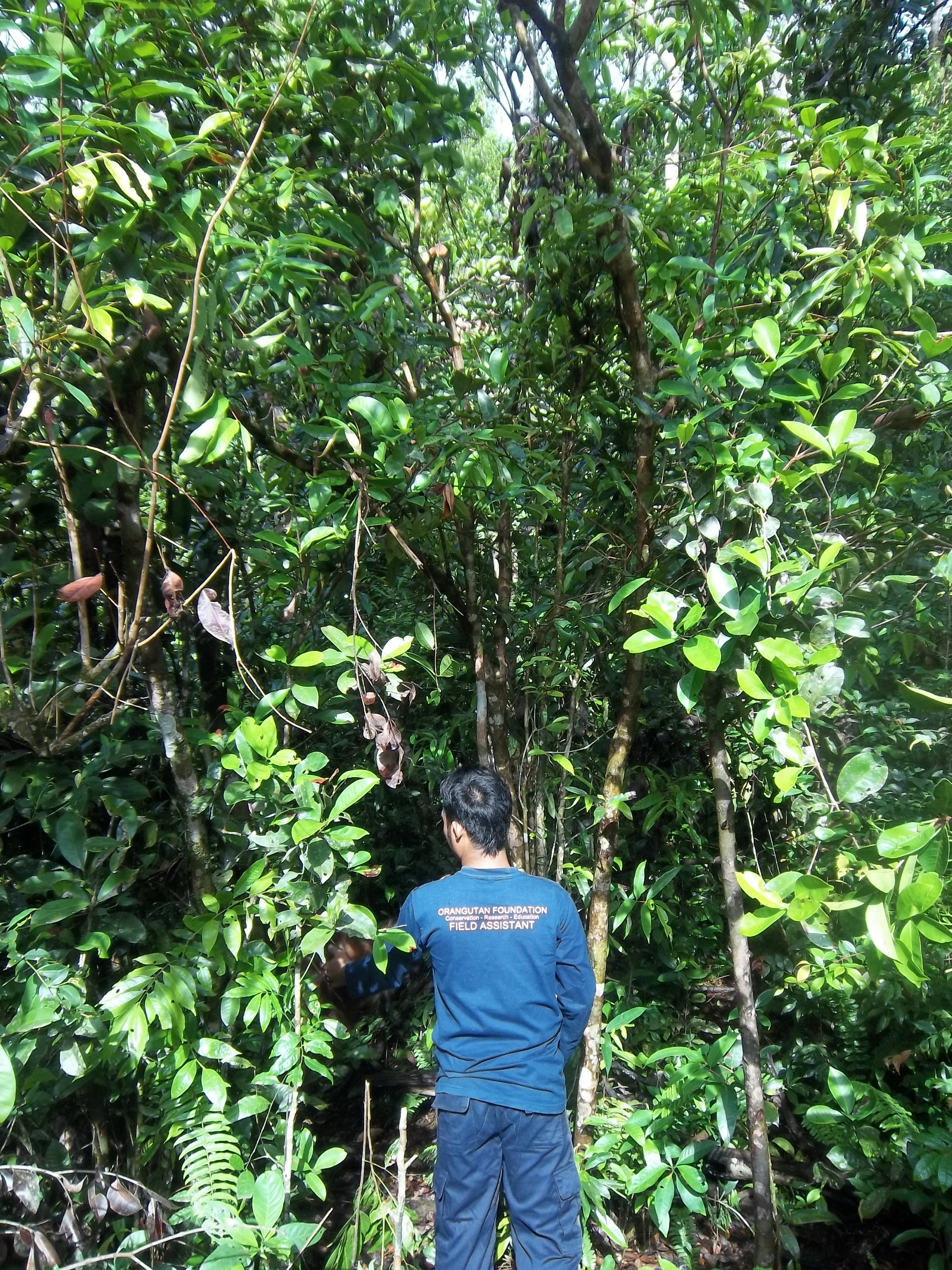
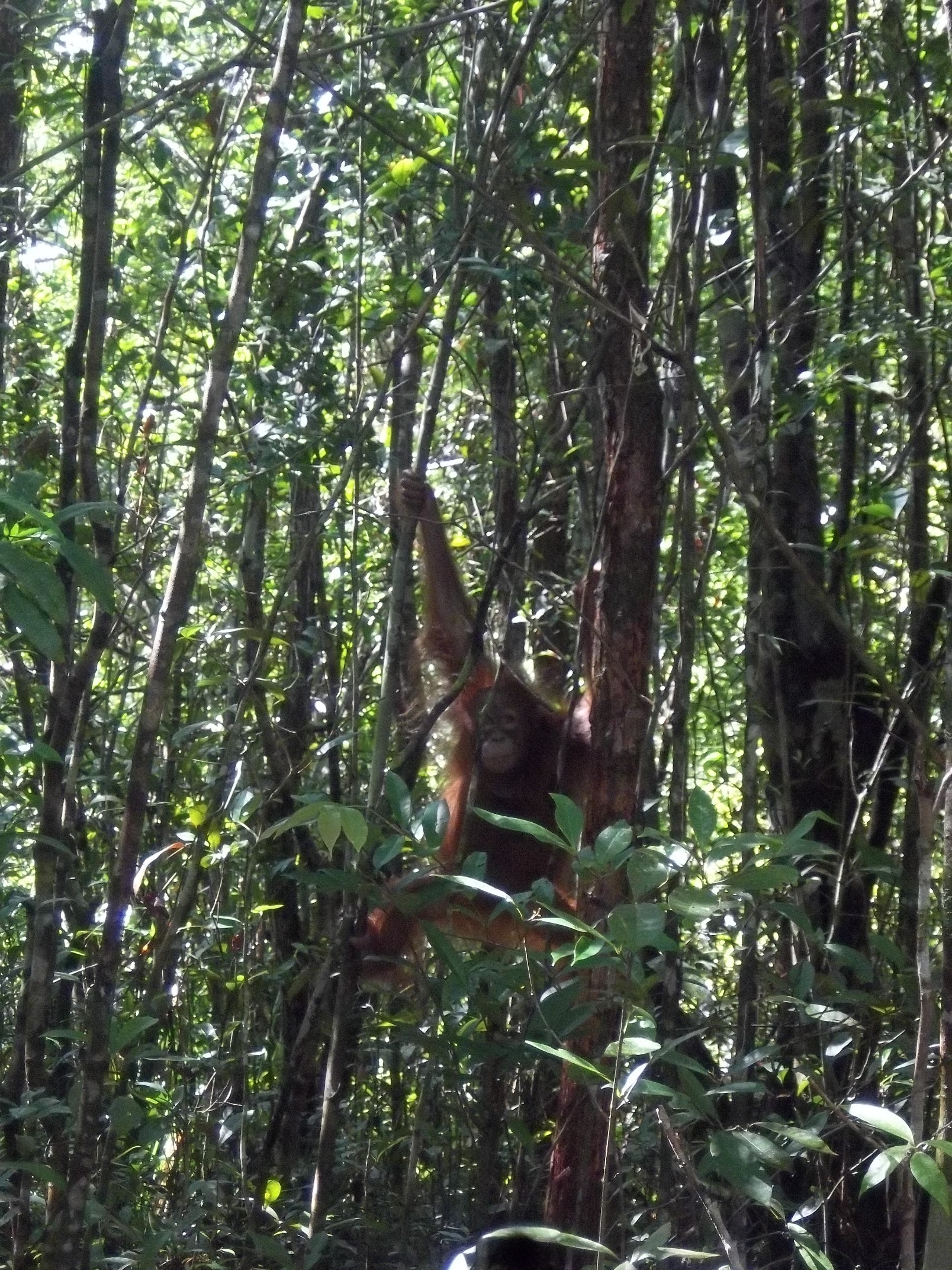
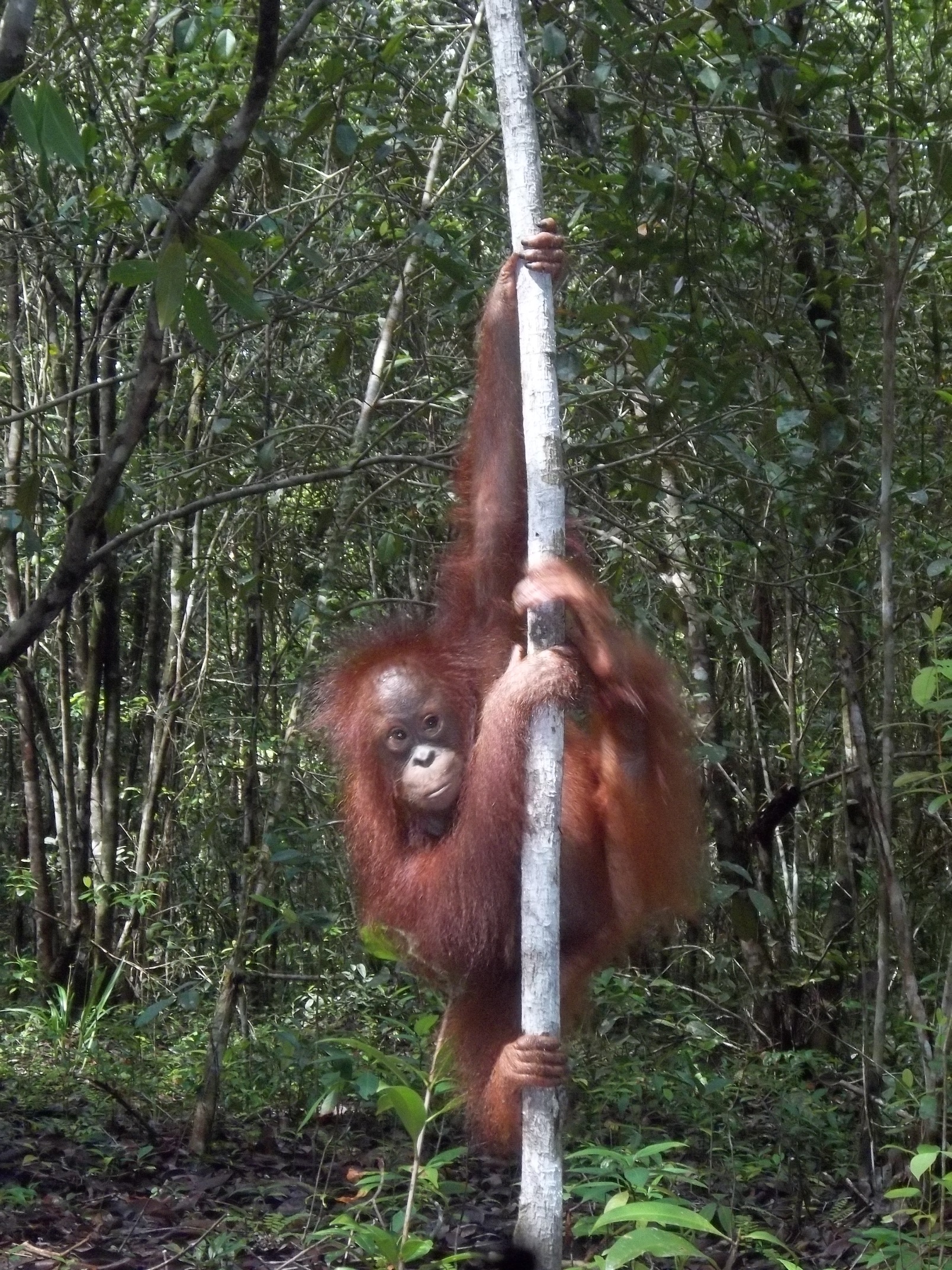

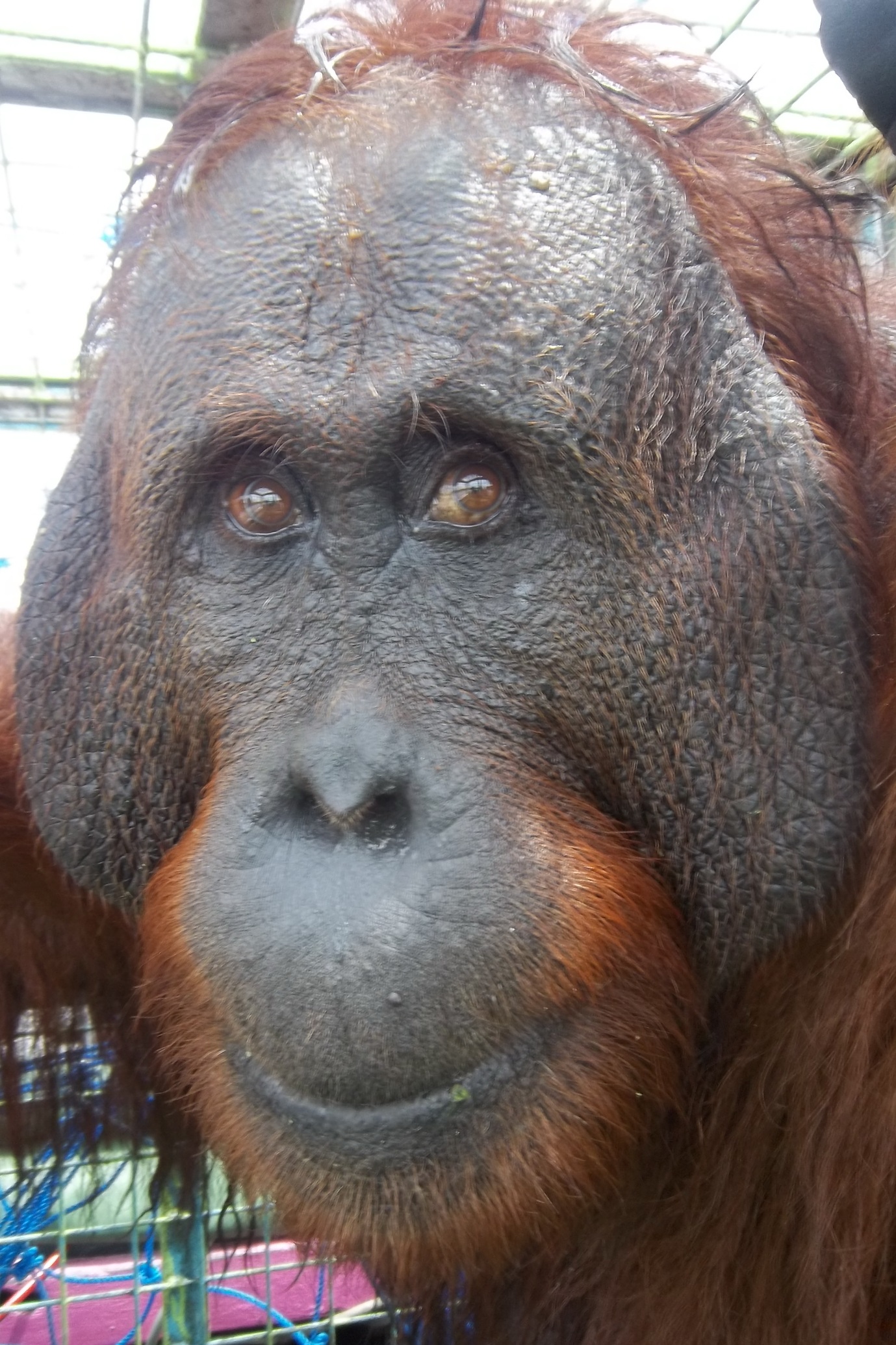



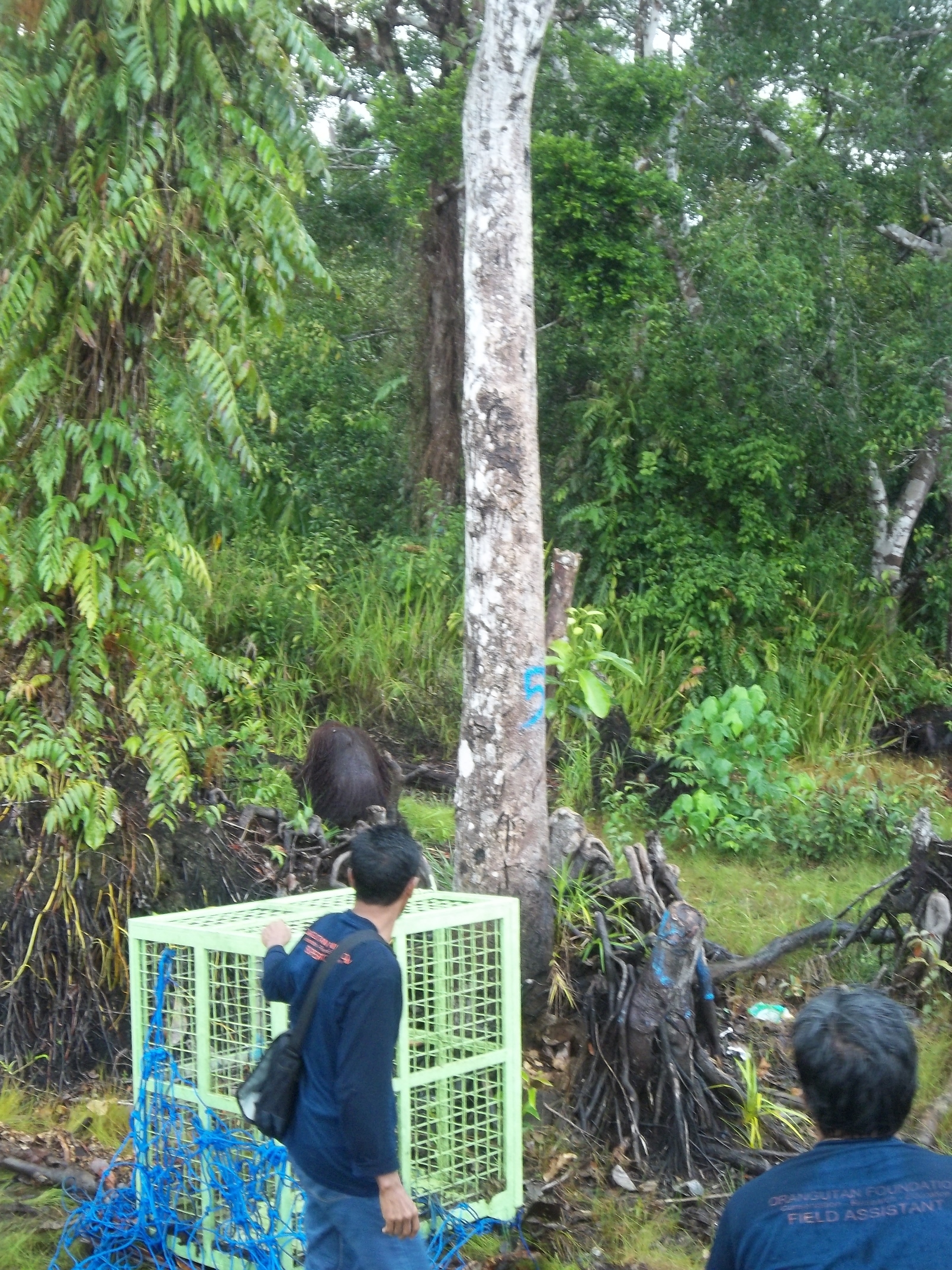
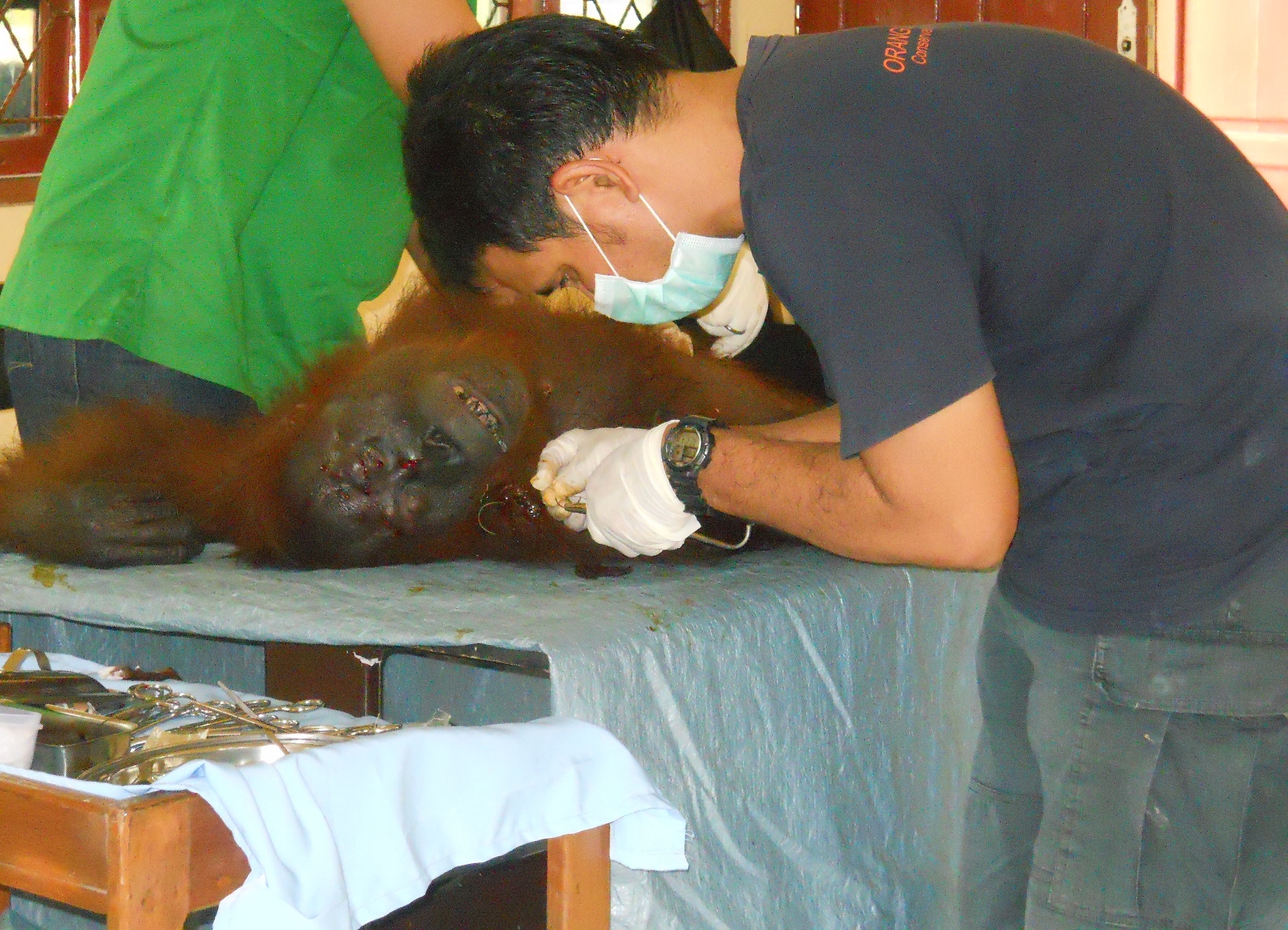
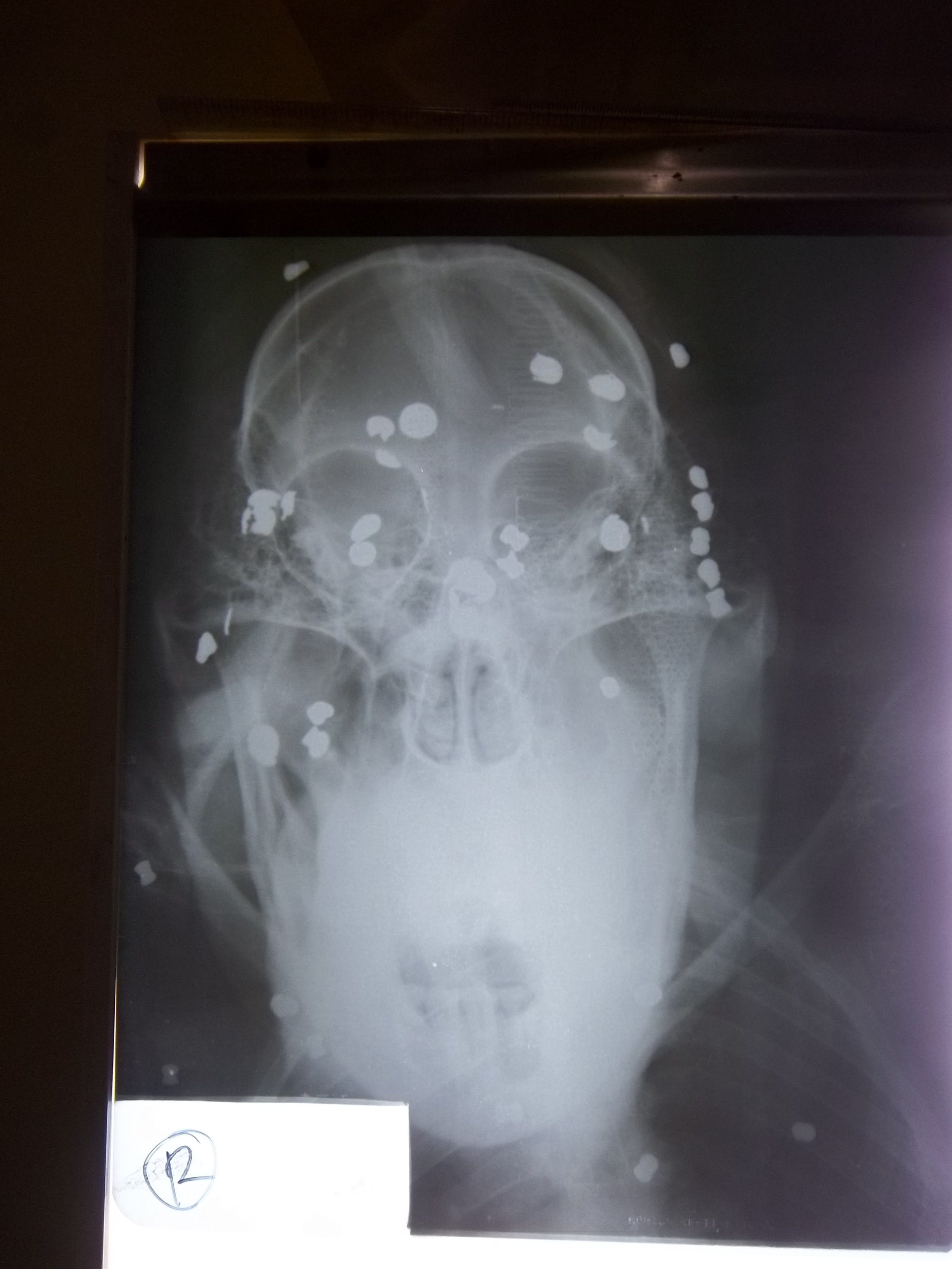

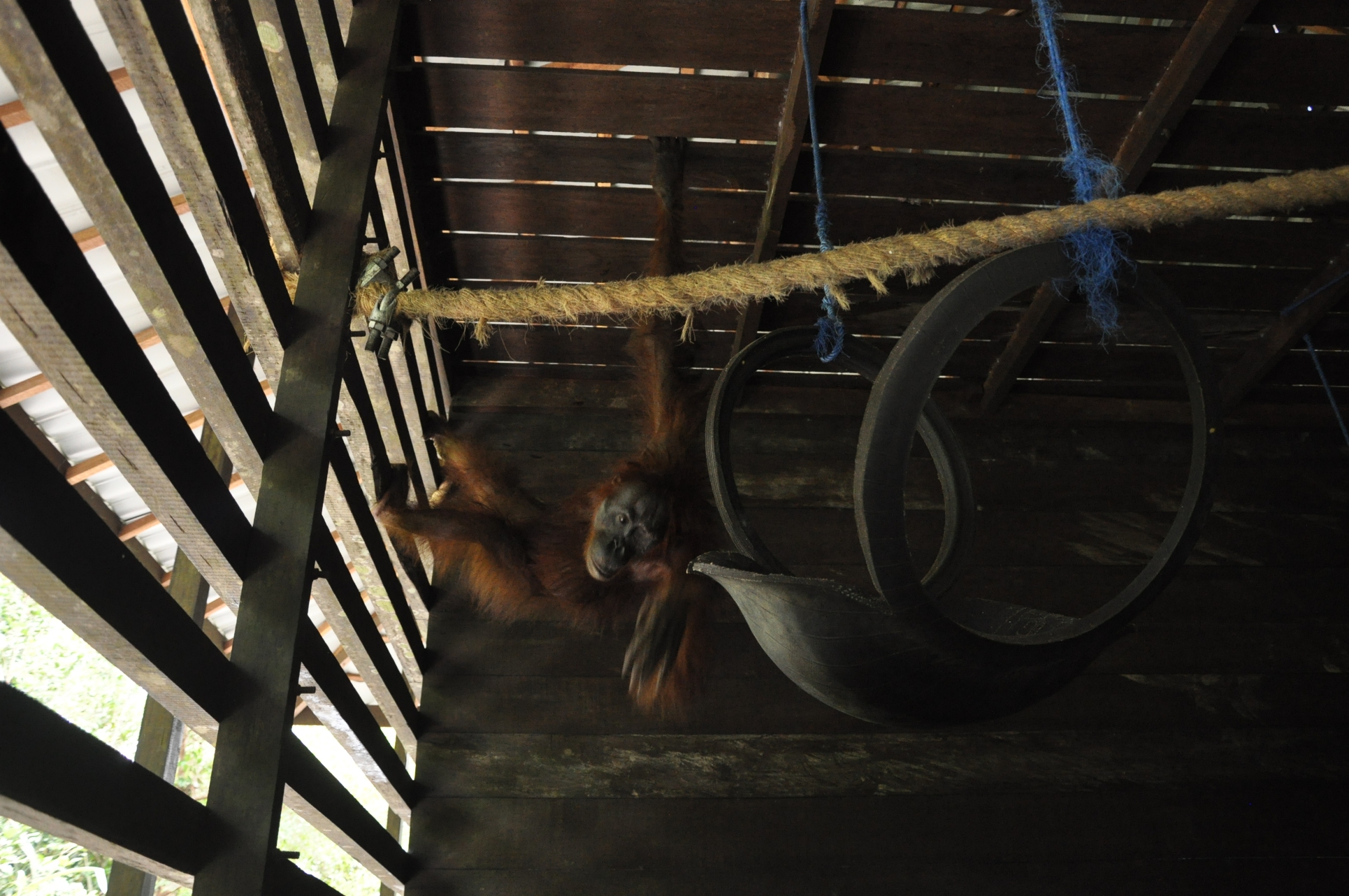


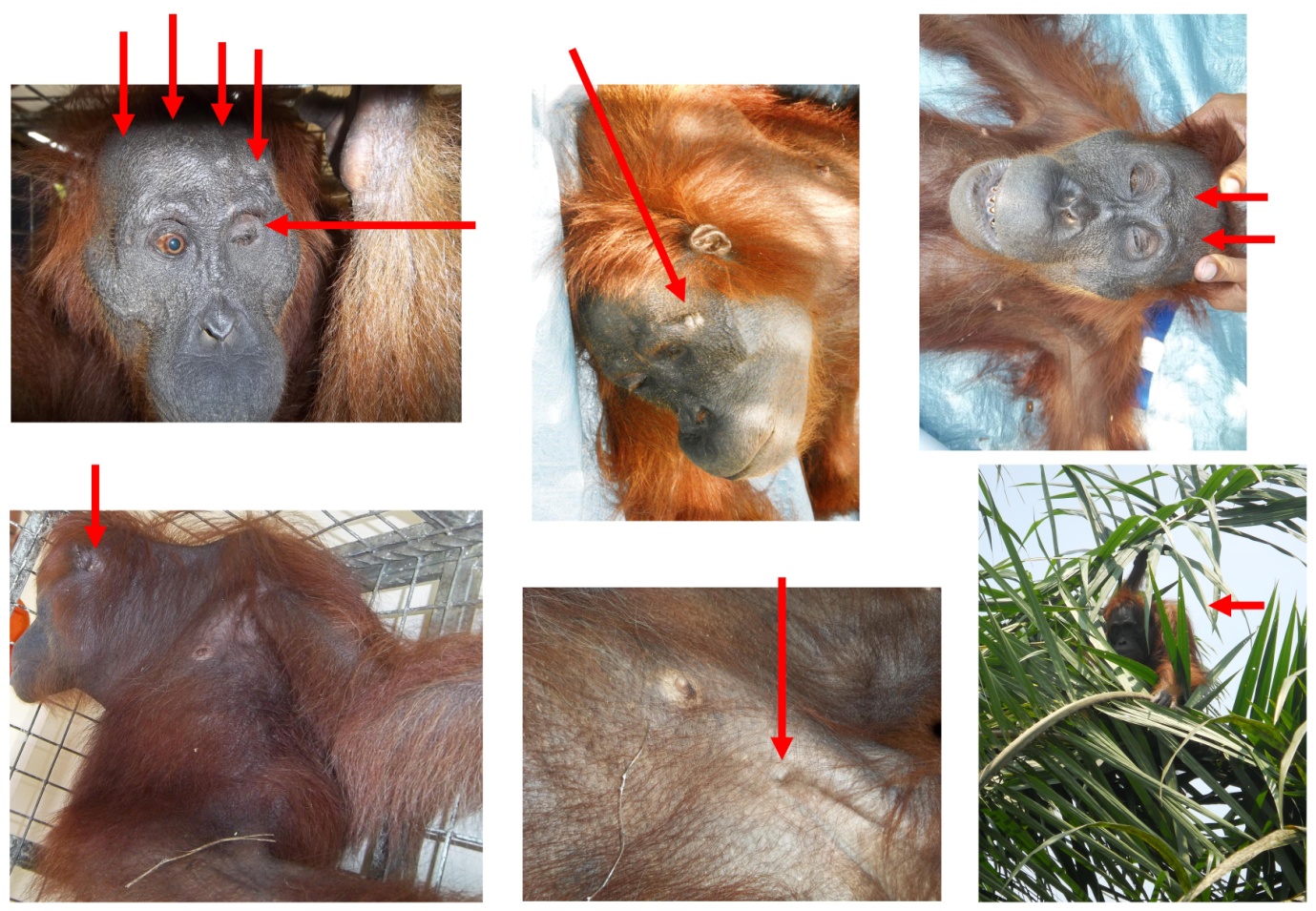































































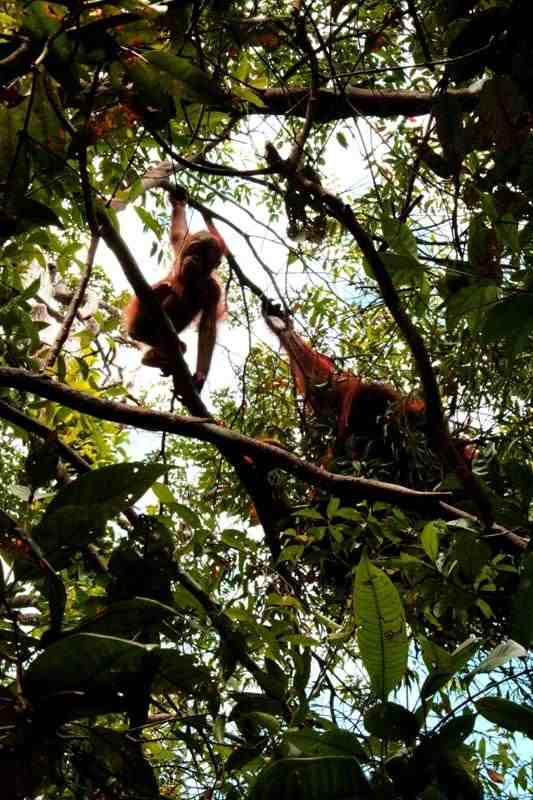 Brian (adopted infant orangutan) and Rosa (the surrogate orangutan mother) are living in the forest surrounding Camp Gemini, in the Lamandau River Wildlife Reserve. They are still being followed and monitored by two Camp staff (Utang and Winto). We met with them on Sunday not too far from the Camp, Rosa and Brian looked very happy. Brian was moving and swinging very friskily, up and down and he sometimes moved to other trees and then back again to Rosa. The whole time Rosa keeping an eye on everything Brian did, if Brian had a problem Rosa went to help him. All Orangutan Foundation staff are very happy with Brian's progress, he is very quick to adapt to the forest.
Brian (adopted infant orangutan) and Rosa (the surrogate orangutan mother) are living in the forest surrounding Camp Gemini, in the Lamandau River Wildlife Reserve. They are still being followed and monitored by two Camp staff (Utang and Winto). We met with them on Sunday not too far from the Camp, Rosa and Brian looked very happy. Brian was moving and swinging very friskily, up and down and he sometimes moved to other trees and then back again to Rosa. The whole time Rosa keeping an eye on everything Brian did, if Brian had a problem Rosa went to help him. All Orangutan Foundation staff are very happy with Brian's progress, he is very quick to adapt to the forest.